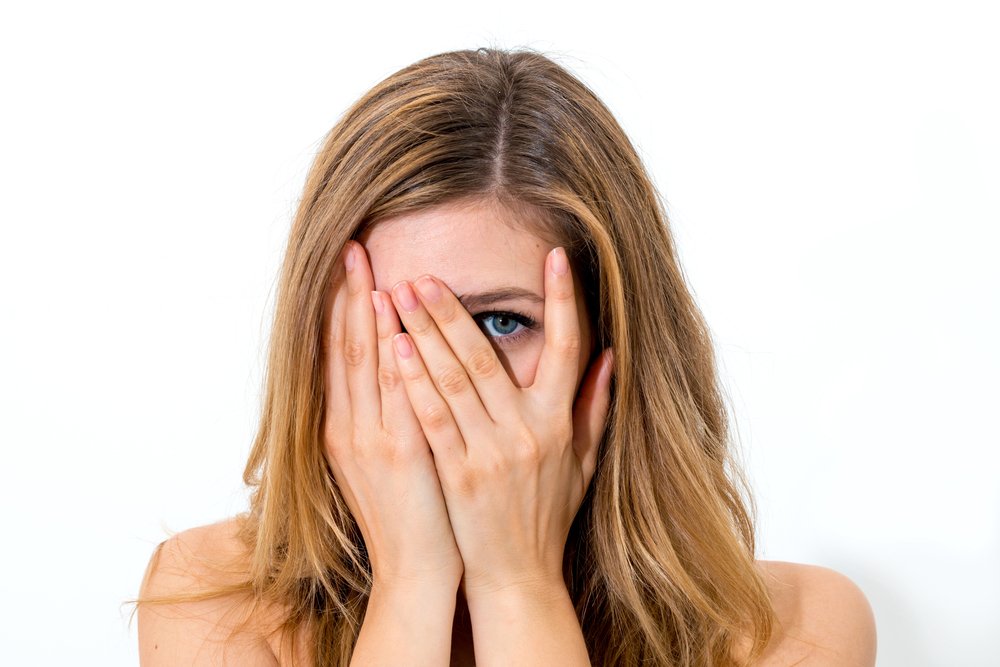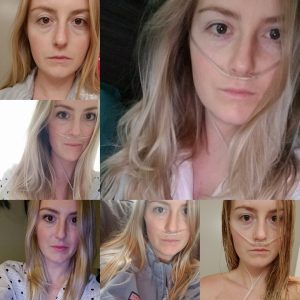What ‘Sick’ Looks Like: My Many Faces of Chronic Illness

“At least you don’t look sick.”
I’ve heard this comment before — meant as a compliment, I’m sure. As if saying “you don’t look sick” is a good thing. As if it makes up for feeling like I got hit over the head with a bag of bricks.
I appreciate the days I can go out into the world and look presentable enough to receive this comment. Recently, these days have been few and far between. If someone told me “at least you don’t look sick,” I would probably run to the nearest mirror just to check my gorgeous self out. The reality is, even on my good days, I’m still struggling with my illness. I’m still “sick,” even if it doesn’t look like it.
How exactly should someone look when they’re “sick” or managing a chronic illness? As a society, where do we come up with these ideas of what the “sick person” looks like? Does someone look sick when pale with dark circles under the eyes? Are sick people thin and frail? Do they use medical equipment and noticeable machines?
What does it mean when someone “doesn’t look sick”? Are they bright-eyed and have a smile on their face? Color in their cheeks? Do they have healthy-looking hair and skin?

(Courtesy of Brittany Foster)
Going through pictures, I’m able to see the many faces I show to the world. All of these faces are what “sick” looks like to me. Though I may not look sick some days, it’s only because my symptoms are easier to manage. When someone sees me looking healthy enough to comment that I “don’t look sick,” they only see what is on the surface. They don’t see the medication I took to be able to get out of the house and throw a smile on my face. They don’t see the hours I spent in the morning with my oxygen turned up just to get some color back in my face. They don’t see what goes on behind the scenes.
On days when my symptoms feel more manageable, I can put on makeup, go out with friends, be without my oxygen while at rest, and smile while actually meaning it. Sure, I don’t “look sick,” but I still am. Society wouldn’t guess that I wasn’t feeling well. Little do people know that going out, even on a good day, takes a lot of my energy. I usually pay for a fun night out a few days afterward. This makeup-wearing version of me is one of my many faces of illness.
More often than not, I don’t have makeup on. This is the side of me who knows I can get out of bed and be productive but lack the energy to do my makeup. Some days, I have rosy cheeks and more color in my face. Other days, I look faint, have dark circles around my eyes and pale lips — this could be classified as “looking sick.” These are the days when I feel just as bad as I look; the days I’ll usually have someone ask me, “Are you OK?” Do they really want the truth?
The makeup-wearing version of me and the pale version of me are two extremes. There are a variety of illness faces in between. There are versions that no one sees (outside of those who are closest to me). There’s the version of what I look like when I can’t get out of bed, when I’m too weak to do my job, and when I fear for my life. Those of us with chronic illness “look sick” in different ways.
There are so many ways society classifies people as “being sick.” I’m sure many will agree with the fact that with chronic illness and pulmonary hypertension, we don’t exactly fit a textbook definition of what sick looks like. For me, chronic illness looks different depending on how I’m able to manage my symptoms and hypoxia. Society needs to realize that “sick” has many different faces. No matter which face I show, my illness always remains.
***
Note: Pulmonary Hypertension News is strictly a news and information website about the disease. It does not provide medical advice, diagnosis, or treatment. This content is not intended to be a substitute for professional medical advice, diagnosis, or treatment. Always seek the advice of your physician or other qualified health provider with any questions you may have regarding a medical condition. Never disregard professional medical advice or delay in seeking it because of something you have read on this website. The opinions expressed in this column are not those of Pulmonary Hypertension News or its parent company, Bionews Services, and are intended to spark discussion about issues pertaining to pulmonary hypertension.









Jacques
Your article is spot on, I have PH as well and it is difficult to say the least. I am still uncomfortable wearing my oxygen outside, must be my stubborness and how I think I will be perceived I guess.